Away
An Agri-Tourist’s Handbook to Québec
Bike-friendly wine routes, cloudberry picking, and nights at the farm. There’s never been a better time to travel through Québec and delight in all our senses.
Text—Juliette Leblanc
In partnership with

The wonderful thing about agri-tourism is that you can do it any time of year. In the farm and food trades, one unique season follows another. Orchards, vineyards, hives, sugar bushes, and agri-tourism farms abound in Québec. Whether for a trip with friends, a romantic getaway, or a family vacation, building your route around what to eat and drink is a marvellous idea.
Agri-tourism, which is sometimes called agricultural or farm tourism, is becoming more popular than ever. Widen your culinary repertoire, have memorable encounters with the people who cultivate our soil, and transform your way of travelling!
An overview of agritourism in Québec.
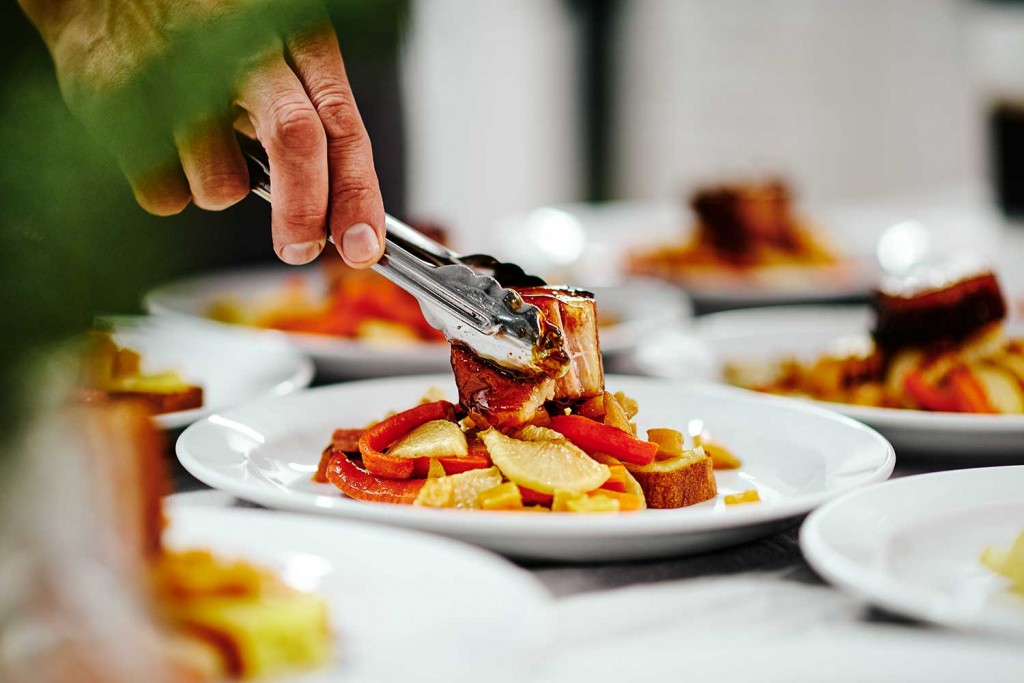
The golden rules
____
1. Adapt your diet to the place you’re visiting
Take advantage of the nearness and freshness of local products. In Gaspésie, on the Côte-Nord, or in the Magdalen Islands, explore local fishing: cold-water shrimp with scallops, lobster, cod, herring, turbot, mackerel, snow crab, mussels, clams, and winkles. In Bas-Saint-Laurent, stock up on smoked fish. Of course, local meat and seasonal fruits and vegetables are options as well — and don’t forget that there are 926 kinds of Québec-made cheese! Who knows, you might also discover sea buckthorn, cloudberry, the first sea salt produced in Québec, or even Nordic saffron. Cultivate your openness to the flavours and scents of the territory.
2. Choose your restaurant according to its suppliers
Choose businesses with local suppliers — these are more and more numerous in Québec — and encourage eating local. In the countryside, the proximity of farms often facilitates this. The Montréal restaurant Candide, with its 100 per cent local menu, is a perfect example. Get informed!
3. Take the time to travel with all your senses
Taste, smell, touch, sight, and sound — everything counts when we eat. Imagine reading a good novel while you stoke the embers of a campfire where local provisions are slowly cooking. Or perhaps you’re inundated with colours and scents in a village farmers’ market, choosing fresh produce to bring camping. Maybe you chance upon a farm that offers fruit and veggie U-picks and finish the day sitting on the riverbank with a fir beer in hand. Now that’s travelling.
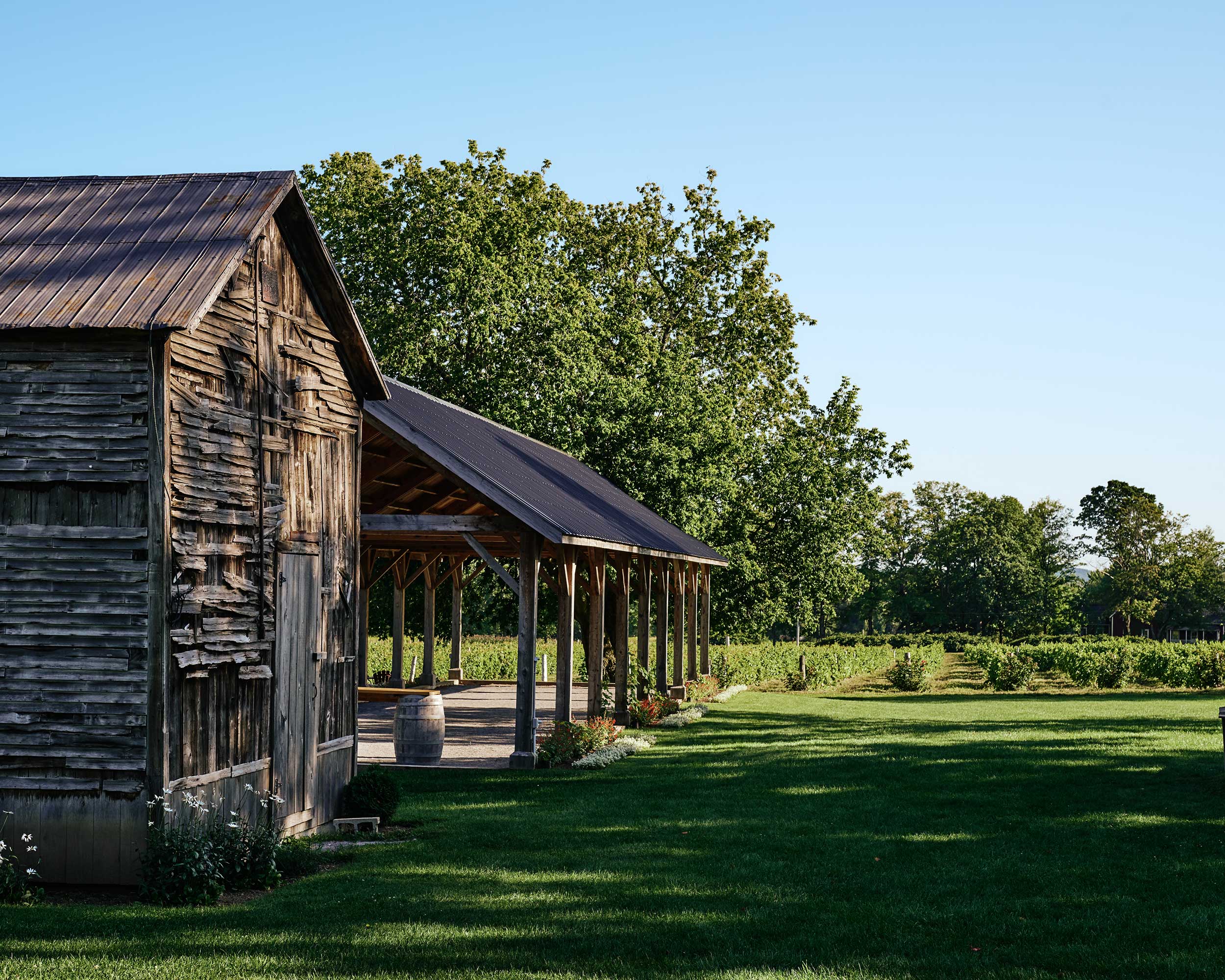
Gourmet routes
____
The appeal of agritourism lies partly in the possibility of a road trip or cycling trip punctuated by gourmet stops. Here are some ideas, in no particular order:
Bike routes
- La Montérégiade bike path stretches out over 48 km of country landscape between Saint-Jean-sur-Richelieu and Granby. The route is asphalt and rock dust, dotted with orchards. Add 54 km and pedal the Estriade in Granby to soak up the magnificent landscapes of the Eastern Townships.
- The Doyenne des vignes, a 76.5 km cycling circuit, starts in Frelighsburg and passes through charming villages including Stanbridge East and Farnham. Don’t miss the Marché de la Station Gourmande in Farnham with its abundant fruits and veggies, jams, and cheeses. And since the circuit passes through the winemaking heart of the Eastern Townships, plan to stop in at several cider houses and vineyards along the way.
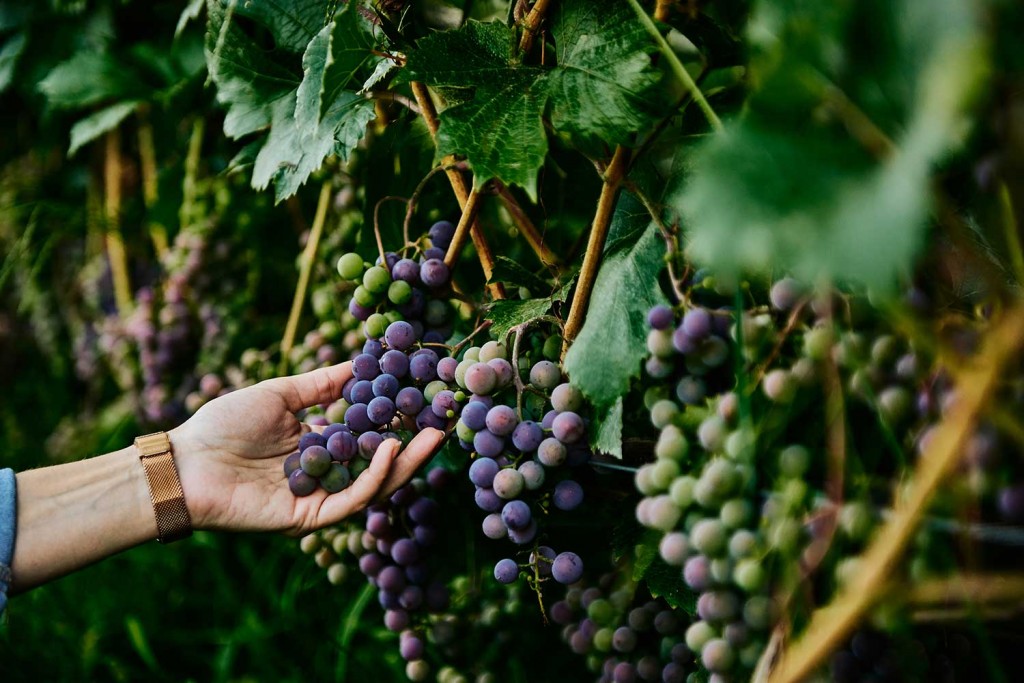
- The Cycloroute de Bellechasse is a bike path that begins near Québec City and ends in the Parc des chutes d’Armagh, a little-known and peaceful area. The route follows two old railways and thus is relatively flat. Stop at the cheese farm Cassis et Mélisse in Saint-Damien-de-Buckland. At the farmers’ market in Saint-Malachie, find the ingredients for a delicious lunch!
- The Vélo-Popote loop (46 km) travels through the well-loved landscapes of the Lower Laurentians. In Oka, the loop connects to The Country Tour route (60 km), which runs along the Lake of Two Mountains. Plan a stop at the nearby Abbaye d’Oka to taste their delicious cheeses.
Longer cycle circuits scattered across the province
- Chaudière-Appalaches —The Delights and Parks Route stretches out over four days and 340 km. This route offers a combination of nature and gourmet destinations at a slow pace.
- Chaudière-Appalaches — In the same area,The Brewer route links Lotbinière–Lévis–La Beauce–Bellechasse–L’Islet–Montmagny and the islands on a 350 km circuit. This four-day loop will delight malted-beverage enthusiasts.
- Eastern Townships — The Circuit Les Têtes Fromagères links 14 local cheese makers.
- Montérégie — The Virées gourmandes offer over 80 destinations. Berry picking, winery visits, or a route that includes wine tastings, visits to cheese makers, and rustic picnics. This area, bustling with agri-food producers, is nicknamed “the pantry of Québec.” You’ll find family businesses such as the cheese dairy Au Gré des Champs which offers, in addition to its farm shop, the opportunity to see the cows in their natural habitat.
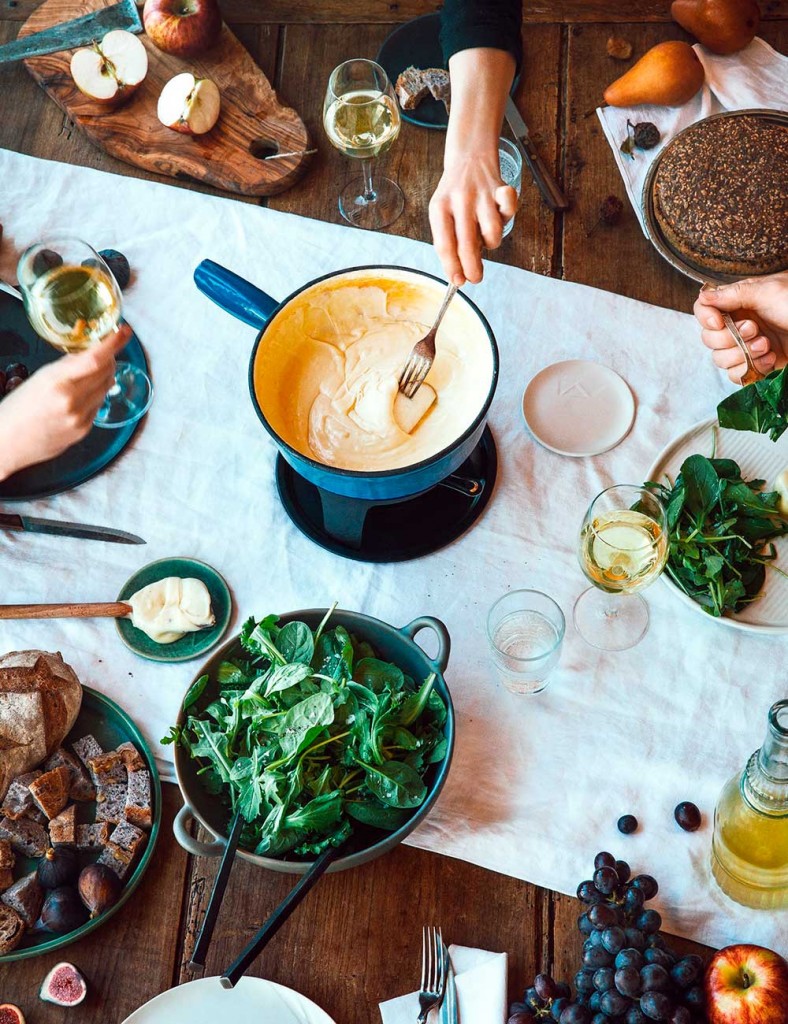
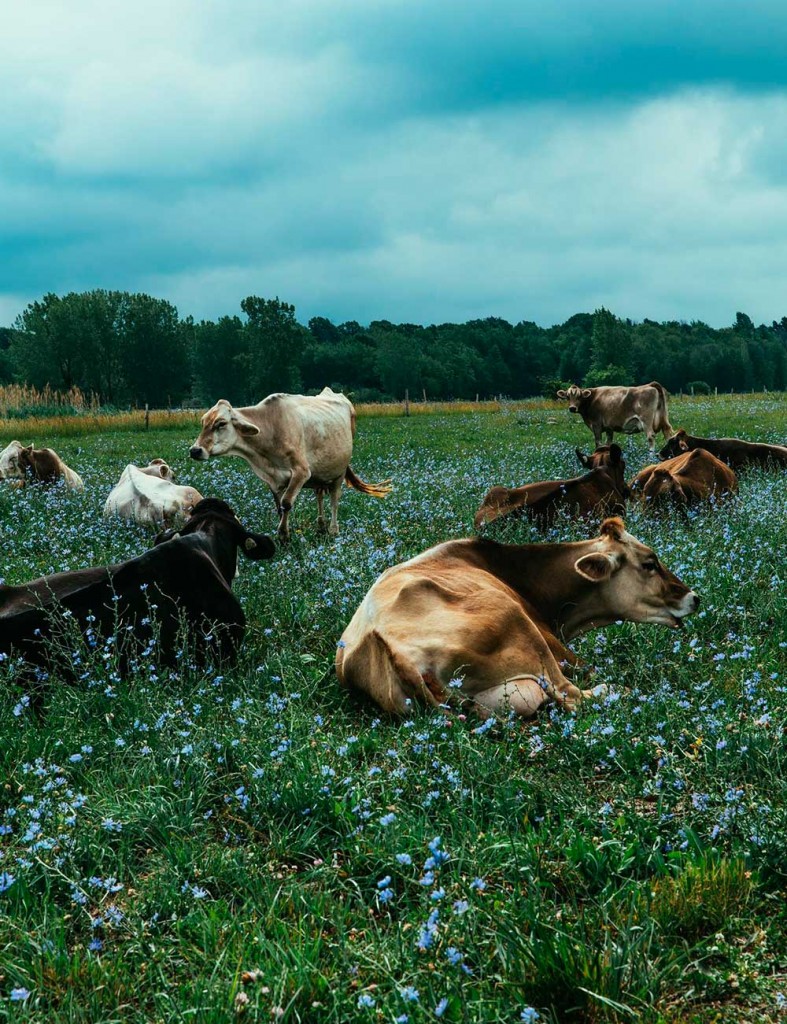
- Laurentians — The Chemin du Terroir features agri-tourism all along a 226 km signposted trail. Visitors will experience the culture, heritage, and finest gourmet locales of the area.
- Lanaudière — Five gourmet circuits make up the initiative Goûtez Lanaudière. Don’t miss the store in the Abbaye Val Notre-Dame. Constructed in 2007, the building was designed by architect Pierre Thibault and is situated on a wooded plateau overlooking the l’Assomption River in Saint-Jean-de-Matha. The site includes two gardens, a kitchen garden, and meditation spots. In Saint-Ambroise-de-Kildare, plan for a day at the hazelnut U-pick in the Jardin des Noix.
- Centre-du-Québec — The Route to Gourmet Delights leads you past farms, orchards, cheese dairies, cranberry fields, and sugar bushes. Each year, the Greater Victoriaville Area organizes the Balade Gourmande, which links 33 sites over 6 circuits. The event, which is usually held when the fall colours are at their peak, is a gorgeous opportunity to travel the undulating roads of the region.
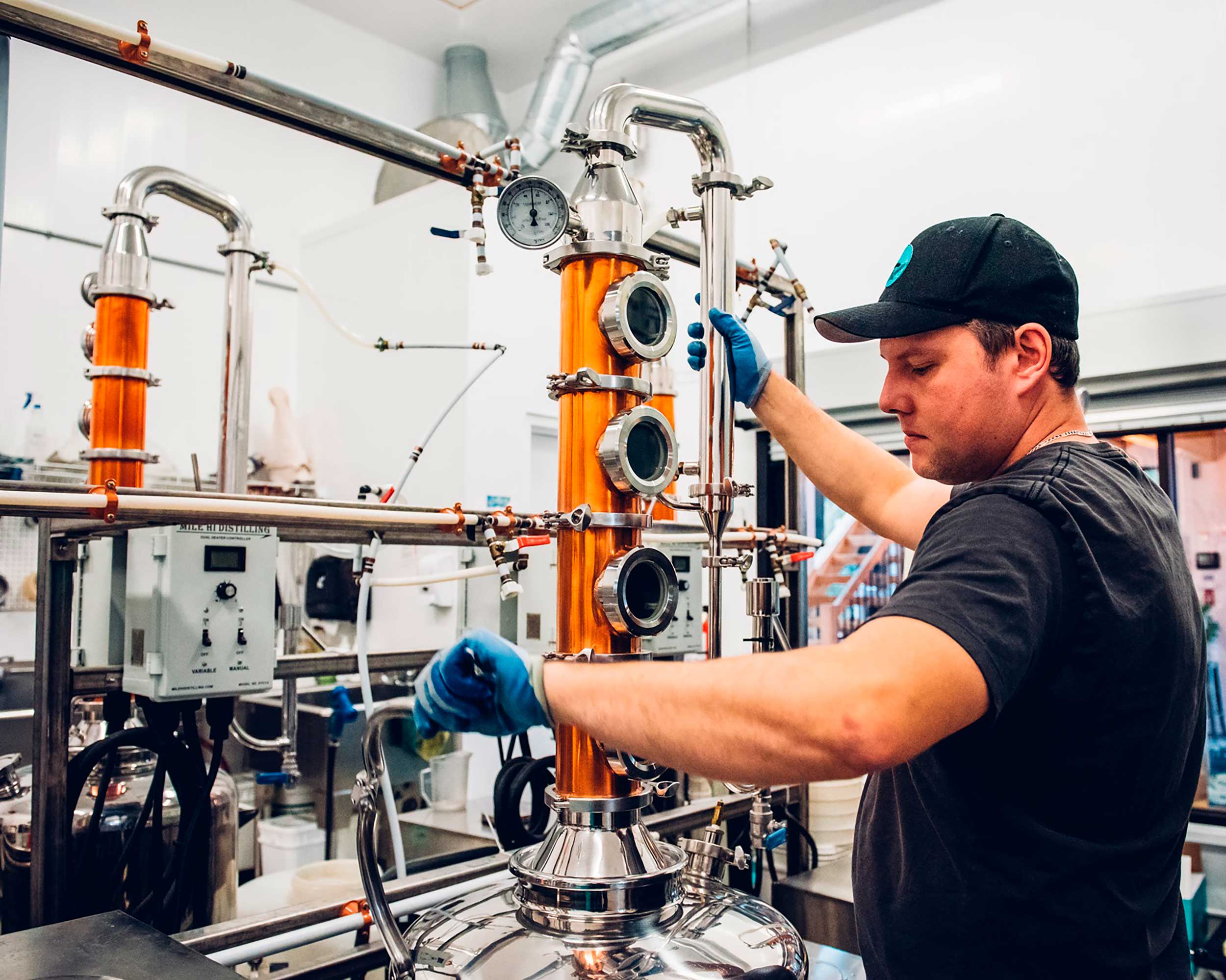
Winemakers, distilleries, and microbreweries
____
Options abound across the province, and there are many possibilities for designing cycle routes. To create your own itineraries, consult this directory of agri-tourism and U-pick businesses. Also, check out the full list of over 100 wineries and 150-odd microbreweries in Québec. Some areas are home to a dozen microbreweries or distilleries. Here are a few favourites, in no particular order:
- Microbrewery by day, theatre by night, Les Grands Bois is in the village of Saint-Casimir in Mauricie. The farmers’ market takes place in front of the microbrewery on Fridays, making this the ideal locale to load up on fresh goods and then find a spot on the banks of the Sainte-Anne River to eat them with a hoppy beverage in hand.
- The Distillerie du Fjord in Monts-Valin is a family story that goes back five generations. Having inherited their ancestors’ love of gin, the Bouchard brothers and their father founded this Saguenay business. Stop by their shop to pick up artisanal gins and products infused with Labrador tea.
- In the Domaine Bergeville shop, treat yourself to organic bubbles produced using a dynamic viticultural method. Their dry, natural, and refreshing sparkling wines are ideal for a vacation apéritif in Hatley in the Eastern Townships.
- The Distillerie des Marigots, situated atop a cliff at the edge of the Baie des Chaleurs in Caplan, Gaspésie, produces a seaside gin that’s the perfect excuse to take a break. The view is gorgeous and the breeze is sweet.
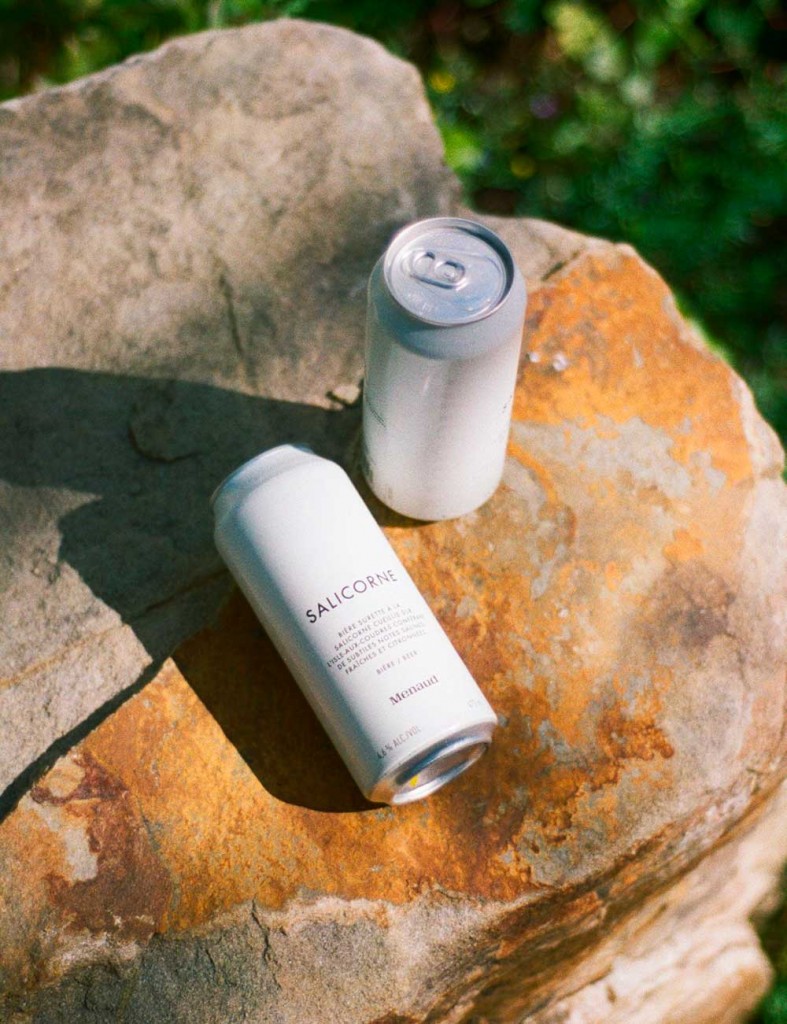
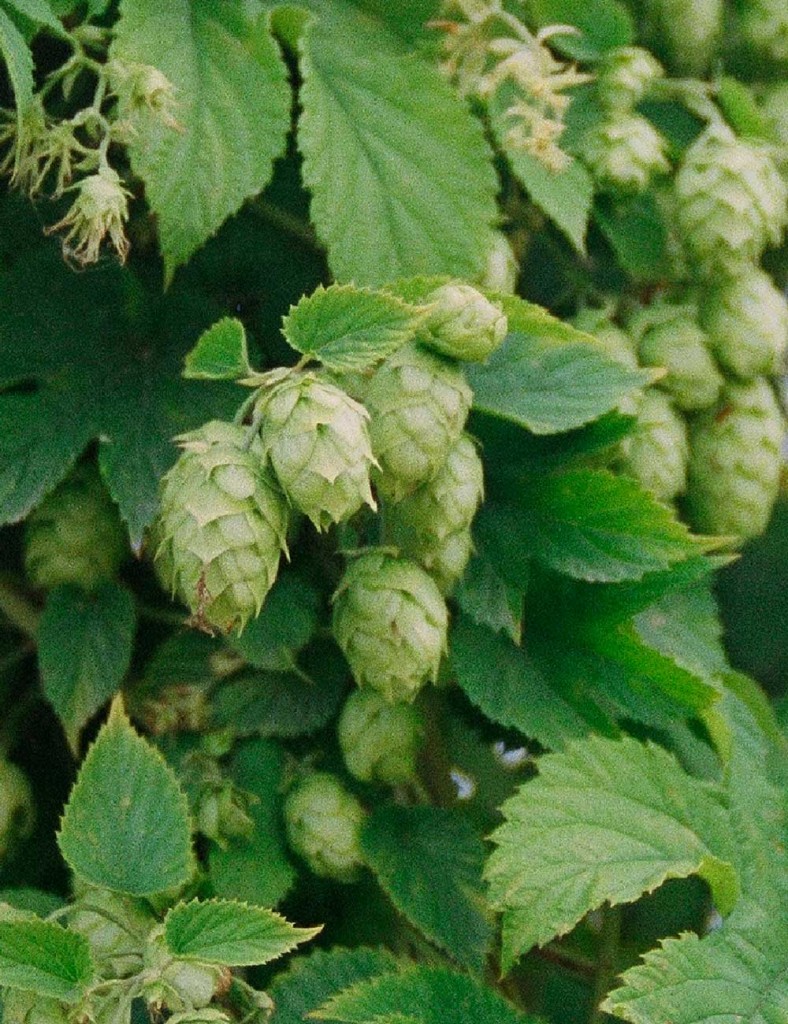
- In the magnificent region of Charlevoix, the Menaud distillery and brewery is open for tasting and purchasing on site.
- The Domaine Sainte-Famille winery on the shore of the Île d’Orléans specializes in viticulture and apple growing. On the menu you’ll find wines, ciders, liqueurs, and after-dinner drinks. Take advantage of the patio, the shop, and the view of the river.
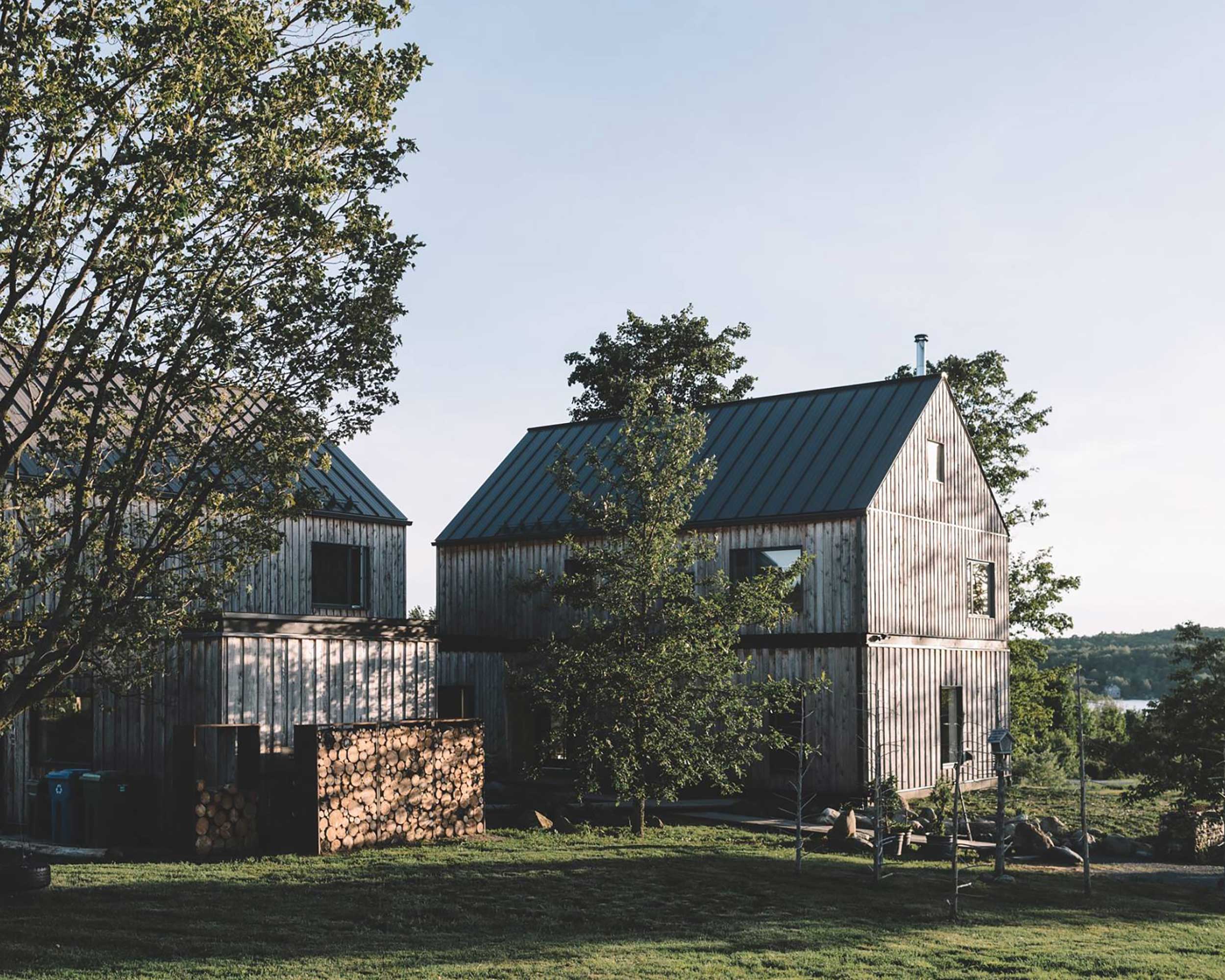
Looking for accommodations on the farm?
____
People who want to experience local gastronomy up close have plenty of choices. Find out about what’s on offer in the areas you’re visiting. Here are just a few examples of guest houses and hostels:
- Île d’Orléans — Confiturerie Tigidou
If you’re planning a trip to the island, the second floor of the jam factory, housed in a former barn, boasts a loft with a view of the St. Lawrence River. Culinary workshops are available for tourists with a sweet tooth.
- Estrie — Au pied levé Farm
This working livestock farm on pasture land offers a guest house and country-style dining.
- Brome-Missisquoi — Les Sœurs Racines
This winery and viticultural guest house in Saint-Ignace-de-Stanbridge offers a large house on grounds that include five kilometres of forest paths, a garden in summer, a pool, and an outdoor hot tub, as well as fresh eggs every day and homemade sourdough bread on Sunday mornings.

- Côte-Nord — Ferme Maricole Purmer
Located in the Sept Îles archipelago on the western part of Grosse Boule Island, this farm cultivates mussels, scallops, and edible seaweed. Their doors are open to visitors for sea excursions, and they offer half-day and full-day outdoor excursion packages, with accommodations in a yurt.
- Gaspésie — Gîte de La Comptonie
VoyageuseThis agroforestry guest house and tiny home are located near the village of Douglastown, between Gaspé and Percé, across from Forillon National Park. Open year-round, the cottage welcomes visitors to Gaspésie Sauvage, a small family business specializing in foraging and the responsible processing of forest products. The guest house is built from local wood, on a 25-hectare forest lot. The tiny home is a former hunting cabin converted into an off-grid dwelling (with no electricity or internet), tucked deep in the forest. Guests can participate in farm activities: feeding the animals, gathering fresh eggs, and cooking wild foods.
- Saguenay — La Vieille Ferme
Located in Saint-Fulgence, this eco guest house with an unmatched view of the fjord sits built above a small market where the owners of a sheep farm sell their products. Guests can visit the lambs and sheep and walk along the interpretative path where they can pick pumpkins and apples. Open year-round.
- Mauricie — Le Baluchon Eco Resort
Eco-responsibility is evident in every element of the guest houses of this ecovillage, located in the municipality of Saint-Paulin. The ecovillage includes four lodges, two cottages, and a spa. You can eat local foods at the gourmet restaurant, the café, or the sugar shack. The site includes 35 km of forest and riverside paths for hiking and mountain biking, as well as a diversity of trees, including a pine forest and a maple stand. - Terego is not exactly a farm, but rather a network of free parking spots for recreational vehicles. Some 205 Québec farmers have signed up. A tasty alternative to camping for lovers of vanlife. Become a member and reserve online.

The agri-tourist’s tool kit
____
U-picks — The site Mangez Québec offers a list of farms offering U-picks or places where you can buy supplies on site.
Farmers’ markets — Meet the farmers and gather provisions for a feast. Consult the directory of farmers’ markets so you can stock up on local products on the road.
In Montréal, visit (or revisit) the Jean-Talon Market or the Atwater Market. Take the time to chat with farmers and, little by little, prepare a picnic that’s 100 per cent Québécois, including products from across the province (berries, smoked fish, organic cheese, fresh corn, artisanal sausages, etc.). Savour it in an urban park of your choice.
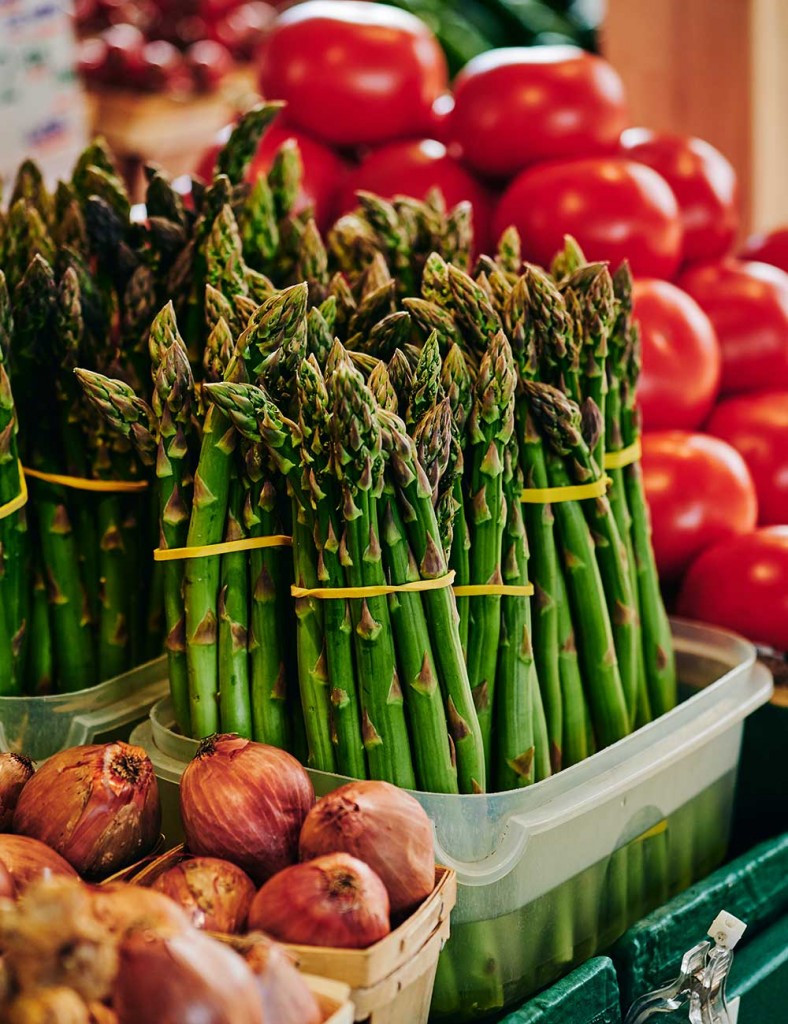
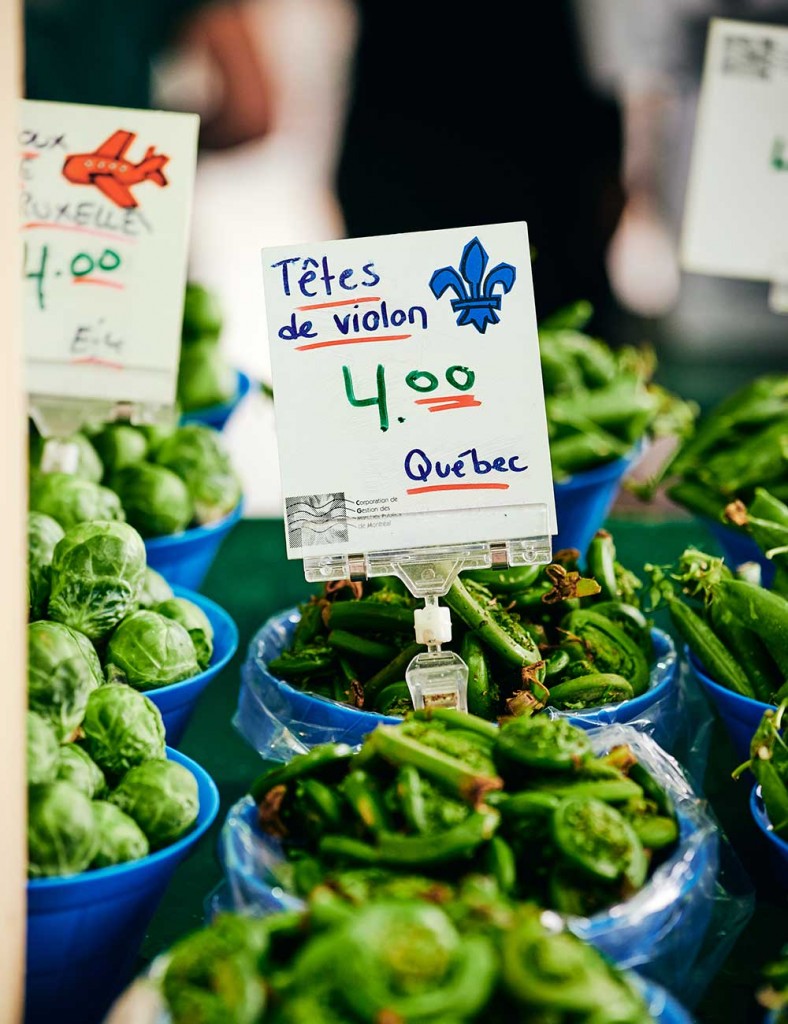
Cooking on a campsite— The concept can seem intimidating. Have no fear!
- Consult our guide, How to Cook with Fire, to become a pro in no time.
- For those headed to maritime destinations, learn to cook fish in the Finnish style.
- When you’ve mastered the fire, try adapting this extraordinary recipe by Ralph Alerte Desamours to impress your tent neighbours.
- Eating local is good — very good — but don’t forget to also drink local. Get inspired by the land and take a trip, one sip at a time.
Perfect picnics — Québec is chock full of spots to eat outdoors. Here are a few recommendations from the BESIDE team:
- Ile d’Orléans. The seaside park in the village of Saint-Laurent offers a shaded picnic area facing the river. In Sainte-Pétronille, find a beautiful view of Montmorency Falls and Québec City.
- Lake Massawippi in the Eastern Townships. Great for birdwatching — specifically white geese, herons, and Canada geese in autumn — and perfect for a swim in summer.
- The summit of Mount Ham in the Eastern Townships for the spectacular view. Dogs are allowed on specific weekends all year round.
- Gatineau Park is the largest green space in Outaouais. It offers picnic areas in the shade or on the beach (some spots are equipped with barbecues). Before or after lunch, go for a hike, a swim, a boat ride or a little rock cilmbing.
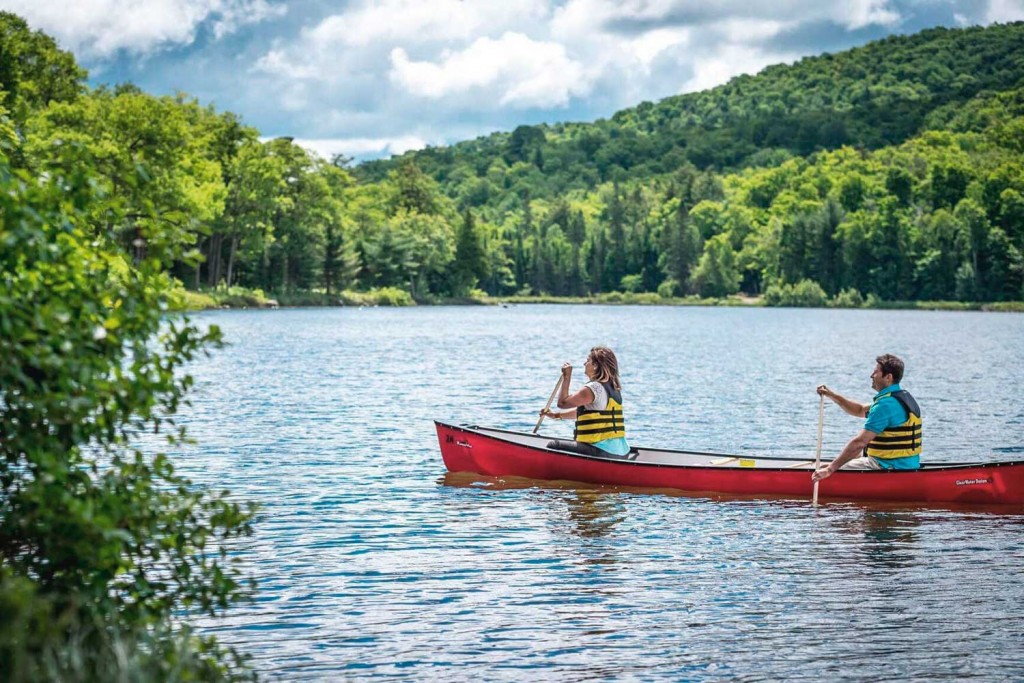
Festivals and gourmet events — Judging by the impressive number of agri-tourism events that take place each year, this province must be home to a lot of foodies. Consult the list and treat your taste buds!
Tailor-made tours — During the health crisis of spring 2020, the Union des producteurs agricoles (UPA) launched a movement to raise awareness and encourage people in Québec to consume local products. Since then, the initiative has given rise to a mobile app, Mangeons local plus que jamais!, which allows people to easily locate small producers that practise direct sales. This makes it easy to create trips where supplies are close at hand, while also getting to visit an area’s attractions.
Terroir et Saveurs — This directory lists gourmet events in different regions of Québec and includes more than 300 certified establishments, including farmers, gourmet or farm-to-table restaurants, and farmers’ markets.
If you feel so moved, consider offering up your time. Several initiatives to reduce food waste and harvest surplus crops are springing up around the province. Here’s a golden opportunity to leave your screens aside and get your hands in the dirt. For an overview of existing initiatives, click here.
In Québec, about 300 farms have opened their doors to the public. There’s something for everyone! Economuseums also support food artisans of all specialties.
***
The routes are numerous, and it’s tempting to combine itineraries in order to discover as many areas as possible. But agri-tourism also allows us to slow down in order to smell, taste, and touch the territory. To stroll slowly through a farm is to really see the land and to fill yourself up.
Never Miss Another Issue
Two issues per year
25% OFF previous issues
Free Shipping in Canada
